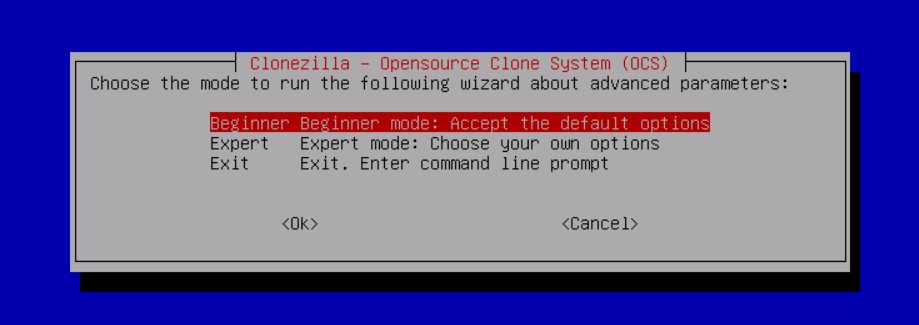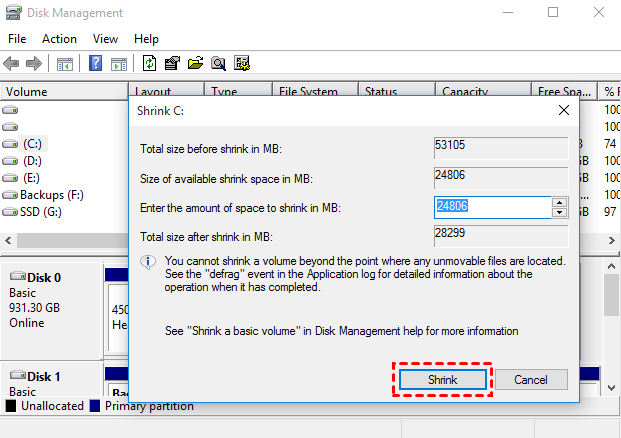
- #Clonezilla image restore workstation will not boot how to#
- #Clonezilla image restore workstation will not boot install#
- #Clonezilla image restore workstation will not boot manual#
- #Clonezilla image restore workstation will not boot iso#
- #Clonezilla image restore workstation will not boot free#
Assuming you have configured the virtual machine correctly, whichever imaging program you use (IFD, IFL, or IFW) can access the optical drive and restore it where desired.
If you saved the image to one or more optical discs, you can simply ensure that the first disc in the backup set is inserted in your optical drive and that the virtual machine guest environment has access to the applicable optical drive. Image file(s) made available on a physical drive that has been mapped for access under the virtual machine. Image file(s) made available through a shared folder (only if Linux or Windows will be used as the guest environment). Image file(s) that have been placed on a virtual hard drive. (Please see the section titled Accessing the Source Image.) #Clonezilla image restore workstation will not boot iso#
(If you will be using this method, an ISO file is the fastest and easiest choice.) Please note: If you use an Image for DOS or Image for Linux CD/DVD disc, ISO file, or floppy diskette to boot from in the virtual machine, you must use a method other than shared folders to make the source image accessible.
 You can create a bootable Image for DOS or Image for Linux CD/DVD disc, ISO file, or floppy diskette using MakeDisk (which is included in the program downloads) and then configure the virtual machine to boot from that media. TBWinPE/ TBWinRE), which you could access in the virtual machine by having it boot from the WinPE optical disc or ISO file. You can run Image for Windows from WinPE (e.g. This approach is the only one that will allow you to use shared folders, along with the other methods, to access the source image.
You can create a bootable Image for DOS or Image for Linux CD/DVD disc, ISO file, or floppy diskette using MakeDisk (which is included in the program downloads) and then configure the virtual machine to boot from that media. TBWinPE/ TBWinRE), which you could access in the virtual machine by having it boot from the WinPE optical disc or ISO file. You can run Image for Windows from WinPE (e.g. This approach is the only one that will allow you to use shared folders, along with the other methods, to access the source image. #Clonezilla image restore workstation will not boot install#
If you have a virtual machine where Linux or Windows is installed, you can install Image for Linux or Image for Windows to that guest environment and then run either Linux and Image for Linux or Windows and Image for Windows under the virtual machine that way. A floppy diskette or floppy diskette image. Create and/or configure a virtual machine that meets the three requirements listed above. The image can either be saved to one or more files or can be saved to an optical disc (i.e. Create the desired image, if you have not done so already.  The target medium, whether it is a virtual disk or a physical disk that has been made available in the virtual machine. The source image, on optical disc(s) or saved to file(s). A way to run the desired imaging program (IFD/IFL/IFW). To restore an image under VMware Workstation, you need for three basic things to be available in a virtual machine, which (because the disks used by virtual machines can be moved to other virtual machines) need not be the target virtual machine: Restoring an image to a split disk or virtual disk with snapshots will require following the instructions below.
The target medium, whether it is a virtual disk or a physical disk that has been made available in the virtual machine. The source image, on optical disc(s) or saved to file(s). A way to run the desired imaging program (IFD/IFL/IFW). To restore an image under VMware Workstation, you need for three basic things to be available in a virtual machine, which (because the disks used by virtual machines can be moved to other virtual machines) need not be the target virtual machine: Restoring an image to a split disk or virtual disk with snapshots will require following the instructions below. #Clonezilla image restore workstation will not boot manual#
Click Next > and continue with the restore process normally.įor more information, please refer to the manual of the imaging program being used: Image for DOS, Image for Linux, or Image for Windows. #Clonezilla image restore workstation will not boot free#
Select either the Free Space or an existing partition (depending on whether the VMDK file already existed or was newly created).
 The added virtual drive will now be available to select as a restore destination. Select VMDK - Monolithic Sparse (IDE) or VMDK - Monolithic Sparse (SCSI), depending on the type you want. You'll be asked to select the type of virtual disk to create. Click Yes at to prompt to create the file. Browse to the location for the new VMDK file. Select a Restore option and click Next >. The basic procedure is as follows (this example is using IFW): Both Monolithic Sparse (IDE) and Monolithic Sparse (SCSI) VMDK files can be created. If you create a new virtual disk with IFD/IFL/IFW to use as the restore destination, there is no need to partition or format it prior to performing the restore. Restoring to a "split" disk (2GB files) or a virtual disk with snapshots is not supported. This type of restore is only possible if the VMDK is a single file. For example, you could use IFW on the host computer to restore an image directly to a new or existing VMDK file (no need to boot into the VM to perform the restore). If you are using IFD/IFL/IFW version 2.21 or later, you can restore directly to a virtual drive file if certain conditions are met.
The added virtual drive will now be available to select as a restore destination. Select VMDK - Monolithic Sparse (IDE) or VMDK - Monolithic Sparse (SCSI), depending on the type you want. You'll be asked to select the type of virtual disk to create. Click Yes at to prompt to create the file. Browse to the location for the new VMDK file. Select a Restore option and click Next >. The basic procedure is as follows (this example is using IFW): Both Monolithic Sparse (IDE) and Monolithic Sparse (SCSI) VMDK files can be created. If you create a new virtual disk with IFD/IFL/IFW to use as the restore destination, there is no need to partition or format it prior to performing the restore. Restoring to a "split" disk (2GB files) or a virtual disk with snapshots is not supported. This type of restore is only possible if the VMDK is a single file. For example, you could use IFW on the host computer to restore an image directly to a new or existing VMDK file (no need to boot into the VM to perform the restore). If you are using IFD/IFL/IFW version 2.21 or later, you can restore directly to a virtual drive file if certain conditions are met. 
No assumption is made regarding the content of the image to be restored.
#Clonezilla image restore workstation will not boot how to#
This article will describe how to restore a TeraByte Unlimited image to a VMware Workstation virtual machine using Image for DOS (IFD), Image for Linux (IFL), or Image for Windows (IFW).








 0 kommentar(er)
0 kommentar(er)
